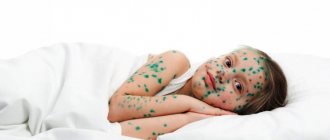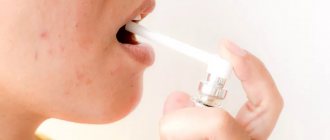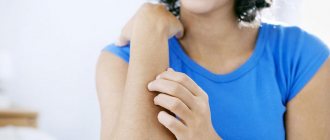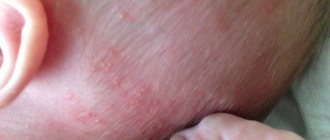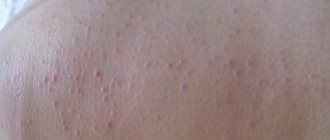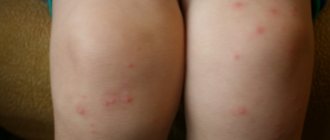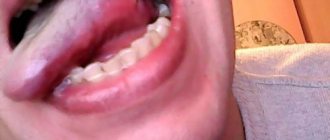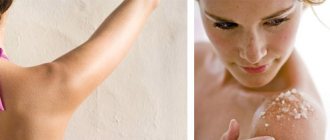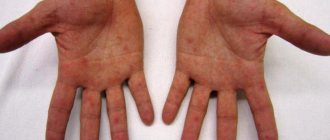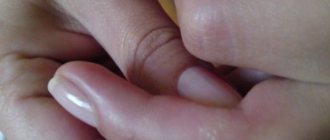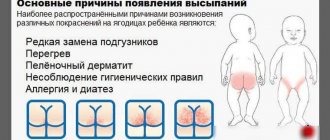- Bloody pimple on the skin of the face and body: causes
- Other causes of bloody pimples
- Home Remedies to Treat Blood Pimples
- How to get rid of a bloody pimple on the face or back
A blood-filled pimple is usually caused by trauma to the skin, such as squeezing or pinching the pimple. Certain injuries, according to Lymphedema People, rupture the underlying blood vessels, causing the pimple to drain into blood and lymph fluid. Blood-filled pimples should never be squeezed or popped and should be treated naturally. Opening A pimple before it heals can spread bacteria to other areas of the skin, which can cause an infection.
Irritating factors
Children's delicate skin often reacts to the environment with rashes. If small red spots appear on the baby's body for no reason, most likely they arose due to some irritating factor. They usually go away soon. Such pimples in children are temporary and localized on the child’s body: in the back, abdomen, neck, and also on the face. But other illnesses can cause such symptoms.
If your child has red pimples all over his body, you should consult a doctor. The patient may have chickenpox. At the same time, small red pimples on the body may indicate mild irritation. If they are on the buttocks and perineum, you should think about diapers, which need to be changed more often or give the baby's skin access to oxygen. To ensure that irritation on a child’s face and body occurs extremely rarely, you need to carefully monitor the baby’s hygiene and prevent factors that may be irritating.
The baby must always be clean and his skin dry, otherwise bacteria will multiply on the surface of the epidermis. It is advisable to bathe the child in herbal infusions, which will have a disinfecting effect, relieve inflammation, itching and redness. If you don’t pay proper attention to hygiene, red pimples on your body will never go away. Over time, they can give way to dry and inflamed skin. Chamomile and string are often used for bathing children (1 year and younger). These herbs protect the baby's skin from irritation.
Due attention should be paid to the cleanliness of toys with which the child comes into contact. After a street walk, they need to be washed thoroughly, periodically rinsing them in boiled water. With this manipulation, antibacterial treatment occurs. Children's hygiene products must be selected very carefully. The packaging says that the product is approved for children and does not contain fragrances or other aggressive reagents that can cause redness.
conclusions
Skin manifestations have begun to attract more and more attention during the spread of Covid, as they can be useful in identifying the disease in the early stages of infection, especially in young children and the elderly.
It is not yet time to draw definitive conclusions that a rash is one of the symptoms of coronavirus.
If various rashes appear on the body, it is worth remembering possible contacts with those infected with the virus or other people with other infectious diseases that cause a rash. Sometimes it can be an allergic reaction to foods, cosmetics or medications.
Sources
- https://kpoxa.info/zdorovie-pitanie/syp-na-spine-rebenka.html
- https://o-krohe.ru/syp/na-pope/
- https://RusMeds.com/syip-na-spine
- https://detkiportal.ru/syp-na-spine-u-rebenka/
- https://skindiary.ru/zabolevaniya/u-detej-syp-na-zhivote-i-spine.html
- https://aptstore.ru/articles/kozhnye-problemy-pri-koronaviruse/
- https://o-krohe.ru/syp/na-spine-u-rebenka/
- https://NogoStop.ru/spina/syp-na-spine-u-rebenka.html
- https://deti-zdorovy.ru/simptomy/syp-na-spine-u-rebenka/
Allergic manifestations
The next cause of rashes is also particularly popular – allergies. Pimples on a child’s body that have arisen due to the action of an allergen are usually very itchy, and their localization is more extensive than with irritation. Your baby may be allergic to foods, toys, clothes, etc. He will develop red spots. Such small pimples can be caused by both living organisms and household objects.
Allergies can be congenital and transmitted from close relatives. If a rash occurs, you should immediately remember where it appeared. Most often, allergies occur in the same places, spreading to the neck, palms, feet, and back.
To make such a diagnosis, you need to consult a dermatologist and allergist. First, the doctor must determine the allergy and only then refer the baby for testing. With the help of allergy tests, it will be possible to identify the irritant and further limit contact with it.
Allergic rashes are of a completely different nature. The skin around the rash may be red, and the child's pimples themselves in this case appear in the form of transparent blisters that are filled with liquid. Usually such formations are very small. They do not grow, but sometimes such blisters become large and voluminous. In such cases, you should consult a doctor.
These white bumps are sometimes found all over the body. Over time, they may burst and dry out. Dry pimples often appear in their place. If such problems arise in a month-old baby, you should call a pediatrician. Allergic rashes can sometimes be confused with infectious acne, which are filled with pus, so young children should be treated by specialists.
Ulcers are always dark. Even the naked eye can see that they are filled with white, yellow or green exudate. It is very important to consult a doctor in case of such an illness, because purulent rashes indicate that some kind of infectious process is going on in the body.
Help with allergies
For allergic rashes, it is necessary to find their cause. If the reason cannot be found out, then it is necessary to reconsider the menu of the nursing mother and the baby itself.
Treatment of acne in a child comes down to the following:
- By using antihistamines you can relieve allergy symptoms. In this case, it is necessary to strictly adhere to the dosages specified in the instructions.
- Next, with the help of sorbents, toxins are removed from the body; for this you can use smecta, enterosgel, etc.
- With the help of probiotics, the functioning of the gastrointestinal tract improves, because dysbiosis very often leads to allergies.
- In severe forms of allergies, hormonal drugs are used, which are prescribed by a doctor.
Viral diseases and other irritants
Sometimes the rash can be caused by an illness caused by a virus. Most often, rashes of this kind include ordinary or purulent acne. They arise due to problems with the digestive organs. Most often, the occurrence of such acne is promoted by dysbiosis with the addition of elevated temperature. With this disease, acne appears on the face or body. A newborn child with dysbacteriosis may suffer from abdominal pain, diarrhea, constipation, and bloating.
To cure problems of the digestive tract, you need to take medications that contain lacto- and bifidobacteria. They will improve the functioning of the digestive organs, thereby helping to cleanse the skin of the face. With the right treatment, your child's acne will disappear very quickly.
You can use bacterial preparations for your baby: Linex, Enterozermina, Lactovit, etc. Sometimes this set of medications is not enough, you have to seek help from a doctor. Children in the first month of life should immediately see a doctor if they have rashes and anxiety.
Very often, pimples on the skin in young patients occur in response to some irritating agent. Bad, low-quality clothing that interferes with breathing causes prickly heat. According to statistics, 7 out of 10 children have such a problem at least once in their lives. This is especially true for children born in the summer months.
Formations appear on the back or in the lumbar region. These areas are covered by clothing and can often sweat. Pampers, which cause diaper dermatitis, have a similar effect. The skin in protective material sweats, and in such a humid and warm place irritations can occur, which over time turn into pimples or ulcers.
To protect yourself from this kind of rash, you need to undress your baby. When the child is at home, you should remove everything from him that could lead to the formation of heat rashes. Wearing overalls, bodysuits and diapers at home is not recommended. The skin needs to be given the opportunity to rest. Acne in a 1 year old child develops after using diapers, which should be used only when necessary.
To prevent such pimples from occurring, you need to maintain skin hygiene. You will have to bathe your child more often, and apply powder and protective baby cream to the buttock area, which will save you from prickly heat. Sudocrem or Bepanten can be used as protective creams.
How to get rid of a bloody pimple on the face or back
Step 1
Wash the bloody pimple and surrounding areas with antibacterial soap twice a day. Always dry the area with a dry, clean cloth. If by chance a bloody pimple bursts, be careful not to touch it when removing the affected areas surrounding it, which can also spread bacteria that can cause serious infection If you begin to experience signs of infection such as fever, redness around the pimple or pus, or a large bloody pimple, then see your doctor for antibiotic treatment.
Step 2
Apply the prescribed antibiotic cream to the pimple, twice a day, 15 minutes after cleansing. Use clean hands to apply a thin layer to the affected and surrounding areas in a circular motion. Antibiotic cream Erythromycin ointment, available at your local pharmacy, helps the pimple heal faster and also prevents the development of bacteria that can cause infection If a blood-filled pimple ruptures prematurely, continue to cleanse and apply antibiotic cream to the area anyway.
Erythromycin ointment, methods of its use and effect in the treatment of acne!
Step 3
Keep an ice pack wrapped in a clean towel on the blood pimple affected area for five minutes twice a day. According to Blirt Treatment, you should check the area for redness. If redness does not appear, apply ice for another five minutes and continue this procedure for half an hour. Application ice helps reduce pain and inflammation by reducing the pressure caused by blood pooling inside the pimple.
Insect bites
There are situations from which it is extremely difficult to protect yourself, especially in summer and spring, when children are susceptible to insect bites. Such rashes can be dense and red, filled with white purulent contents. Squeezing out such spots is strictly prohibited, because during such a procedure you can introduce an infection into the wound.
The skin at the site of the bite is constantly itching. Because of this, the spot can constantly increase. To prevent such a situation, you need to explain to the child the possible harm. Then he can stop scratching this spot, otherwise a wound will form in its place, which will hurt.
If a child touches this area with dirty hands, infection may occur. Such an ulcer will rot and bother you for a long time. To quickly and efficiently get rid of such an ailment, you need to take an antiallergic drug and lubricate the sore spot with anti-allergy gel: Psilo-balm and Fenistil. In the evenings, such pimples can be rinsed with infusion of chamomile, string or calendula. These medicinal herbs will relieve acute reactions of redness and itching and speed up the recovery period.
Other physiological factors
Teething can cause acne. During this process, the baby pulls objects into his mouth that can sharpen his teeth. Sometimes they are not completely clean, so they provoke the appearance of stomatitis. The same thing happens if the baby’s mother does not monitor his hygiene and allows dirty objects to appear nearby that he can drag into his mouth. In this case, red spots will form around, but there will be no rashes on the child’s body.
In conclusion, the provoking factors include children’s adolescence. Teenagers aged 11-15 years most often experience a rash such as acne. It is characterized by increased oily skin, many pink inflamed elements and comedones. In such a situation, it is worth reviewing the diet, more carefully monitoring hygiene and cleansing the body, and using antibacterial local remedies for acne.
It is recommended to clean such skin using alcohol lotions and mechanical cleaning. In particularly severe cases, dermatologists recommend special anti-rash tablets and deeper skin resurfacing procedures.
Similar articles
Having discovered red pimples on a child’s body or face, parents often think that this is a common allergy.
But the rash does not always appear in response to an irritant.
Children's immunity is unstable and is formed through exposure to viruses and bacteria.
- All information on the site is for informational purposes only and is NOT a guide to action!
- can give you an ACCURATE DIAGNOSIS !
- We kindly ask you NOT to self-medicate, but to make an appointment with a specialist !
- Health to you and your loved ones!
The causes of the rash can be serious infections, which are very dangerous if left unattended.
Causes
To choose the right treatment, you need to find out why the rash appears.
Only a doctor can visually determine the type of acne, and you must go to an appointment with your baby.
But it wouldn’t hurt for mom to learn to understand what types of rashes there are.
So as not to worry once again if your child has red pimples.
In newborns
Even in the maternity hospital or in the first weeks after discharge, pimples can be found on the stomach and face of newborns.
Whiteheads or milia
- They appear on the cheeks and nose due to unusual activity of the sebaceous glands. It showers the child with an excess of hormones that he received from the mother during childbirth. After all, in order for the baby’s head to pass through the birth canal, it is greatly flattened. Meanwhile, a large amount of adrenaline and other stimulating substances are released into his blood.
- The sebaceous glands begin to work actively, but they are not yet fully formed and cannot cope. As a result, the excretory ducts become clogged with sebum. There is no need to treat this type of rash. In a few days or weeks it will disappear without a trace.
Photo: white rashes on a baby
Excessive attention to milia, smearing them with brilliant green, touching them with your hands can provoke inflammation.
An attempt to squeeze or pick off pimples will result in the appearance of scars on the delicate baby skin.
Photo
Newborn acne
These are small pimples on the face and head.
They are also found on the ears, back, chest or neck. Parents think that acne appears from insufficient hygiene of the baby and begin to bathe the child more often. But it is a mistake to think so.
This is due to underdeveloped sebaceous glands and the child’s still imperfect hormonal system.
Acne also does not require treatment.
You need to wait until the baby’s body matures and gets stronger. The pimples don’t hurt or itch, the child doesn’t notice them and feels great.
- It is necessary to ensure that the baby's skin is always dry.
- If a mother’s hands are itching to somehow help her child, then you can gently wipe the skin with a cotton swab dipped in a decoction of string or chamomile.
A small rash all over the body with peeling is a symptom of an allergy.
- Red spots tend to merge, form crusts and are often very itchy. Even if a mother is breastfeeding, this does not mean that the cause of the allergy is food, although this is possible.
- In fact, laundry detergent, bath products, and even pet hair can be irritants. In this case, you cannot do without the help of a doctor. After diagnosis, the pediatrician will prescribe medications to alleviate the baby’s condition. And mom will have to identify the allergen and neutralize it.
Photo: allergic rash
Small red pimples may turn out to be heat rash.
More often, the rash is found on the butt and in skin folds. This is the result of the child overheating.
First months of life
In the period up to one year (rarely up to two years), most babies become infected with a disease that seems terrible at first glance.
- It begins with a sudden and causeless increase in temperature, which lasts 2-4 days. Then the temperature drops, and spots like roseola appear on the child’s body.
- They do not cause trouble for the baby and soon disappear without a trace. Often a rash is confused with an allergy, but its nature is different. This is a sudden exanthema - a harmless infection caused by one of the varieties of the herpes virus.
The disease is very contagious and common, so up to 99.9% of babies are affected by it.
There is no need to panic, and there is no need to treat the child either.
- The temperature should be brought down if the baby feels unwell.
- After recovery, immunity is developed for life; for this reason, the disease does not occur in adulthood.
Photo: sudden exanthema
First years of life
In children of the first years of life, the cause of rashes can be infectious diseases.
The most dangerous of them is measles.
Therefore, it is important to know how these diseases begin and what symptoms are accompanied.
A non-infectious rash can be:
- allergies;
- caused by parasites (scabies);
- pathologies of the circulatory system and blood vessels;
- sunburn, chapping;
- insect bite;
- reaction to vaccination;
- intestinal dysbiosis.
Allergies, in turn, can be drug, food, contact and respiratory.
In vascular diseases, a rash appears due to:
- dysfunction or reduction in the number of platelets - blood cells responsible for coagulation (more often this condition is congenital);
- decrease in vascular permeability (provoked by injuries, increased temperature).
Table of diseases by type and location of rash
Skin rashes in a child are one of the most common reasons why parents have to consult a pediatrician or allergist. The rash itself can have a different appearance, it all depends on its etiology. Diagnosed at absolutely any age.
Rash is a common childhood problem
Doctors distinguish several types of rashes on a child’s body:
- Tubercles. Bandless formations that are localized deep in the dermis. The diameter of the neoplasms is from 0.5 to 1 cm. They leave ulcers and scars on the skin. It becomes dry, and its relief and color change.
- Blisters. They usually occur as a result of an allergic reaction and go away on their own within a few minutes or hours after they appear. Observed with insect bites, nettle burns, urticaria, toxicoderma. They pass without a trace, sometimes they itch.
- Bubbles - have a bottom, a tire, a cavity. After opening them, erosion may form and the skin becomes rough.
- Nodules. Characterized by changes in color, texture and consistency of the skin. Dimensions range from 1-3 mm to 1-3 cm in diameter. Accompanying psoriasis, lichen planus, atopic dermatitis, warts, papillomas, eczema.
- Pustules or pustules. Their cavity contains purulent exudate. They can be both deep and superficial.
- Roseolas are spots of an indeterminate shape, pink in color. When the skin is stretched, the spots disappear.
The symptoms of chickenpox are difficult to confuse with the symptoms of any other infection.
You don’t always need to worry when a rash appears, but you need to determine its cause; this can only be done by a qualified specialist. The origin of the problem can be different:
- Erythema toxic. Resembles small nodules or blisters with liquid. Does not require treatment and goes away within a few weeks.
- Erythema simple. Expressed as slight redness of the skin. Such rashes are an adaptation of the body to new conditions of existence.
- Infant acne is caused by an imbalance of hormones in the baby's body.
- Miliaria minor is not dangerous to health; it occurs due to high levels of humidity in the baby’s environment.
Rash in the form of spots
The child's body is most often exposed to infectious diseases, since the child's immunity is still too weak. Also, the cause of all kinds of infections is the state of intestinal microbiocenosis.
Infectious damage to a child’s body often leads to a rash. To avoid possible complications when any type of rash appears, you should contact a specialist (pediatrician). The location of the rash is very variable. Any part of the body can fall into the active rash zone.
This rash, like small red dots, most often occurs due to allergic reactions. Perhaps this is due to the diet, the foods consumed, and the tissues adjacent to the body.
Properties, characteristics, reasons:
- On the body, such a rash looks like red dotted spots that have an oval, round shape.
- Has no elevation above other parts of the body. The rash is distinguished only by color.
- The appearance of red dots occurs due to strong blood supply. Hyperemia or arterial congestion increases blood flow, which leads to the appearance of such spots.
- Red dots may have edges or edges. Or they can be solid.
This rash is divided into two main types:
- Roseola. A characteristic feature of this type of rash is its small size. It ranges from 3 to 30 millimeters.
- Erythema. This rash is distinguished by the large size of its elements. From 3 centimeters. It is most often located in the chest area. The characteristic color is bright scarlet.
Acne is the body's reaction to various external or internal environmental factors. Pimples also appear due to allergic reactions and infectious diseases.
Main characteristics, description, causes of acne:
- This rash has different shapes and types. It may appear as an abscess. It rises above the skin level and forms a round pustule.
- The size of such a rash is not very large. About 1-1.5 millimeters in height.
- Shaped image: round pimple, cone-shaped pimple, internal (flat) pimple.
- The main cause of acne in young children is allergic reactions. This rash may be accompanied by itching and redness.
- The appearance of acne can also be caused by hereditary factors. This disease can be transmitted from mother to child.
- Stress often leads to this type of rash.
We invite you to familiarize yourself with Acne on the face: causes and treatment. How to get rid of subcutaneous, white, red, purulent, small, large pimples, milia (milli) on the face
Acne rashes are divided into 4 groups (according to appearance and nature of inflammation):
- Dry acne. The formation of such acne occurs in the winter season in both children and adults. They appear due to thickening of the stratum corneum of the epidermis. Treatment is provided with cosmetics that exfoliate dead skin particles and moisturize the skin.
- Watery pimples. They appear for many reasons (diathesis, consumption of low-quality food, use of low-quality cosmetics - shampoos, creams, foams, soaps), but the most common is an allergic reaction to the product. Watery pimples are accompanied by itching. May be a symptom of scabies, measles, chickenpox, rubella, dyshidrosis.
- Purulent acne. At first, this rash may appear as small red dots, but after three to four days changes occur. Red spots turn into purulent pimples. This rash may be caused by a staph or streptococcal infection. It is necessary to do a complete (clinical) blood test, a general urine test, and then consult a specialist. During the test period, you should avoid sweet foods to prevent bacteria from multiplying.
- Subcutaneous pimple. The occurrence of such acne occurs due to blockage of the ducts by plugs of the sebaceous glands. Usually this phenomenon goes away on its own, but if no changes occur, you should consult a specialist for advice.
The appearance of a blistering rash can lead to a number of very dangerous diseases:
- Pemphigus. This disease can lead to death in a child. The immune system is damaged when the body begins to fight healthy cells.
- Dermatitis herpetiformis, which is an autoimmune disease. A feature of this disease is the appearance of bubbles and blisters.
The blistering rash can come in two forms:
- It may make up about 50% of the human body. Appears in different parts of the body.
- Appears in a separate part of the body, forming only small round itchy redness.
This rash can appear due to:
- Allergic reactions of the body, skin.
- Systemic diseases.
- Skin diseases.
- Infectious diseases.
After healing, the bubble disappears, leaving no marks on the body.
To begin a course of treatment, it is necessary to identify the cause and stage of the disease, for which you need to contact a specialist.
Rash in the form of spots
This rash looks like spots with different colors (red, pink, yellow, brown). The color of the spot depends on melanin (skin pigment). If melanin is present, then the color of the skin with areas of spots will be darker. If melanin is absent, the color shade of the spots becomes brighter and lighter.
A rash in the form of spots characteristic of diseases such as:
- Measles
- Rubella
- Scarlet fever
- Skin tumors
- Various skin diseases.
Features of the rash in the form of spots:
- The rash is caused by hundreds of viral agents.
- This rash has a tendency to merge from small round spots into larger spots.
- Skin lesions most often occur in the chest (torso) area of the child.
- The rash may appear due to food, contact, or drug allergies.
List of doctors who should be contacted for a rash in the form of spots:
- Dermatologist
- Neuropathologist
- Oncologist
- Allergist
- Surgeon
Here you can read more about red spots on the face.
The main elements of the rash:
- Tubercles are cavityless formations protruding above the general level of the skin, 1-5 millimeters in size (sometimes reaching up to 10 millimeters). The tubercles are capable of forming ulcers or healing by replacing the infiltrate with the formation of an element of cicatricial atrophy of the skin in place.
- Blisters are formations with a strong inflammatory process. The size of the blister reaches 10 centimeters. The skin inflammation is pale pink at the base and bright red in the middle of the element.
- Bubbles are small, liquid-filled cavity elements. Their diameter is about 10 millimeters. They can occur due to burns, bites, various skin diseases, and allergic reactions. Vesicles (bubbles) arise as a result of the manifestation of diseases such as herpes infection, allergic dermatitis, autoimmune bullous diseases.
- Spots are flat rashes on the human body. Their standard diameter is about 10 millimeters. The spots come in different sizes, forming over a period of time inflamed areas of skin that are larger in diameter.
- Papules (also called a node) are formations of varying consistency that protrude above the main level of the skin. They are divided into two types: inflammatory and non-inflammatory. Dimensions reach 5 millimeters. The shape is different.
- Vesicles are small cavity formations of hemispherical shape. The internal contents include a clear or translucent liquid. Differs from a bubble in its smaller size.
- Pustules are pustules. The pustule contains gray or white pus inside. When infected, the pus becomes greenish in color.
- Roseola are small spots that do not rise above the skin level. Groups of spots usually form.
- Hemorrhage is bleeding into the skin due to the destruction of blood vessels. On the skin it looks like small spots or dots of different shapes. It has a red and then yellow color (during healing).
Any rash on the body has serious consequences. Parents first of all pay attention to this condition of the child and think little about the consequences.
It is impossible to describe all cases of the appearance of a rash; it can be a consequence of more than a hundred allergic and infectious diseases and conditions of the child’s body. Therefore, any rash requires consultation with a doctor.
In medicine, a rash is considered to be a variety of rashes on the skin that in one way or another change the appearance of the skin in color or texture. For parents, all rashes are approximately the same, but doctors always distinguish between primary rashes, which formed first, and secondary ones, those that formed later, at the site of the primary ones or nearby.
Different childhood diseases are characterized by different combinations of primary and secondary elements.
Rashes on children's skin occur much more often and more easily than on the skin of adults. It is always caused either by external influences on the skin (sun, temperature, humidity, toxins, chemicals, etc.) or internal processes (diseases and conditions).
A rash can be physiological and completely natural, a reaction provided by nature to natural processes within the body. Quite often, parents have to deal with a pathological rash, which is caused by disorders in the body, diseases, parasites, exposure to chemicals and toxins and other external and internal factors.
Types of rashes
The appearance of the rash can tell a lot about it.
- Pimples can be small, large, soft and dense, inflamed, in the form of spots and dots.
- The internal contents may be clear or purulent.
- And the color of the rash varies from white to pink or bright red.
- Infectious rashes are almost always combined with symptoms of ARVI.
- An allergic rash, on the contrary, is very rarely accompanied by a violation of the general condition.
Infectious
All infections are divided into viral and bacterial.
Viral diseases are highly contagious and are mainly transmitted by airborne droplets. Because of this, they are also called volatile.
These include:
- measles – appears as pink spots on the head, face and behind the ears. Then the spots merge and begin to fall down. After 2-3 days, the rash already covers the entire body, including the legs. Measles always goes away with fever, headaches, cough, runny nose and conjunctivitis;
- Rubella is a little easier. The color of the rash is paler, the temperature rises slightly, the eyes turn red, and a slight runny nose appears. The virus affects the lymphoid system, so the lymph nodes always enlarge. The spots are first found on the face and then spread to the entire body;
- chicken pox – occurs in children under 12 years of age. Adults get sick much more severely, and their risk of complications increases significantly. The infection must be overcome in childhood. That is why it is important for a child to attend preschool institutions and be in a group.
Initially, red spots appear throughout the body, which soon become blisters filled with liquid. After two days, the vesicle shrinks and becomes crusty.
Photo: chickenpox rash
On average, after a week the crusts disappear without a trace. The child is contagious as long as new blisters appear. Body temperature rises, headache, weakness and lack of appetite occur;
- herpes - itchy blisters around the mouth, on the lips. The virus permanently settles on the skin, causing frequent relapses when the immune system is weakened;
- Molluscum contagiosum is also caused by a virus. It is a dense pink or white bump with a depression in the center. The rashes occur in groups and go away on their own within a few months (sometimes years), leaving no traces.
Infections caused by bacteria:
- Scarlet fever is caused by streptococcus. The disease begins with a sharp sore throat and fever. Red dots are found on the arm, in the flexure areas of the limbs, on the sides of the body and on the cheeks. Moreover, the nasolabial triangle remains pale and does not become covered with a rash. The skin is red, dry and rough to the touch. The tongue is bright red with inflamed and enlarged papillae. The throat is the same color, and there is a purulent coating on the tonsils;
- meningococcal infection is the most dangerous and can be fatal. The microbe affects not only the membranes of the brain (meningitis), but also blood cells. In this case, the rash appears a day before the person dies. The child begins to vomit, the temperature rises, and the rash looks like small hemorrhages. It is necessary, without wasting time, to urgently go to the infectious diseases hospital.
Non-infectious
Non-infectious rashes include:
- small inflamed spots on the chin , gradually merging into one spot, appear due to excessive salivation. This is more common in a one-year-old baby during teething;
Photo: prickly heat on the neck
- small and red rashes are prickly heat;
- purulent acne can appear from poor body hygiene;
- dense subcutaneous pimples, acne, comedones occur during puberty in adolescents. Pimples can be hard and non-inflamed or red with signs of inflammation. Their white head is located on the surface of the excretory duct or hidden under the skin;
When vascular permeability is impaired, large or small hemorrhages appear.
Measles
This disease is the most contagious. It occurs with a painful dry cough and a temperature of 38-39 °C. Additional symptoms are conjunctivitis and hoarseness. Photophobia occurs.
The rash on the legs may be severe. Sometimes individual pimples merge, and then large and continuous red spots of different shapes form. They usually last 3-4 days in this form, then they fade, and in the same order in which they appeared - first it goes on the face, then on the legs. But after it, light pigmentation still remains for a couple of weeks. Fine peeling remains at the site of the rash.
Measles
Measles requires medical attention. If it is severe, hospitalization will be required; the child should remain in the clinic until complete recovery. But in a mild form, the disease can be treated at home by taking the medications prescribed by the doctor.
The room in which the sick child is located must be constantly ventilated, regularly wet-cleaned and the bed linen changed. Since the temperature is relieved with antipyretic drugs, the child begins to sweat. In such cases, you need to frequently wipe the skin with wet wipes so as not to aggravate the rash. After the procedure, you need to immediately change your baby’s clothes. When the temperature returns to normal, you can bathe the child.
But even at elevated temperatures, it is recommended to gargle, brush your teeth and wash your eyes, especially if there is a risk of developing secondary purulent conjunctivitis or stomatitis.
After measles, even if the rash has completely cleared and all other symptoms of the disease have disappeared, the child cannot yet be considered completely recovered. Lethargy, weakness, increased fatigue and absent-mindedness persist for a long time. Therefore, there is no need to burden your baby with additional activities. Instead, you should give your body the opportunity to regain its strength. The child is prescribed natural immunostimulants. This is ascorbic acid, tincture of Eleutherococcus. You need to make vitamin cocktails and include more fresh fruits and vegetables in your diet.
Locations
The locations of pimples indicate the presence of diseases:
Photo: marks from insect bites
- pimples on the buttocks and pussy may indicate high blood sugar levels in a child. This is one of the symptoms of diabetes. Also, a rash appears on the butt due to diapers and the skin being left without air;
- red pimples on the tummy are most likely an allergy;
- a rash all over the body in the form of papules may be caused by insects. There should be a small dot in the center of the pimple - the site of the bite.
In the mouth
In rare cases, the herpes virus affects the mucous membranes.
- Then a rash appears on the gums, palate, and inner surface of the cheeks and is called stomatitis.
- A symptom of thrush is a cheesy white discharge on the lips and tongue. If you carefully remove them with a cotton swab, red sores open underneath them.
- Also, pimples in the mouth can be an indicator of dental caries.
Photo: fungal stomatitis
On the palms
Transparent intradermal blisters on the palms and soles appear in spring or autumn - this is a type of eczema (dehidrosis).
- They appear as a result of allergies against the background of unfavorable external factors.
- And a rash on the palms, accompanied by mouth ulcers and fever, can be caused by an enterovirus.
- Paired points connected to each other by subcutaneous channels are noticeable in scabies. The mite lives in the outer layer of the skin. Traces appear between the fingers, then on the stomach, but they are never on the face or in the hair.
Acne with enterovirus and rotavirus infections
Many people confuse these two diseases or believe that they are essentially the same thing. But in reality this is not the case at all.
Enterovirus infection refers to a whole group of different diseases that arise due to the penetration of enteroviruses into the body and are characterized by the appearance of certain symptoms, in particular, a significant and sharp increase in temperature, the appearance of a red rash not only on the surface of the skin, but also in the throat. Also, with such diseases, there is a change in the functioning of the digestive system, which is expressed in the occurrence of diarrhea and vomiting.
Acne caused by enterovirus infection is called enteroviral exanthema. They usually appear 2 or 3 days after a sharp increase in temperature, located on almost all parts of the body, including the face. Pimples appear as small red dots, resembling rashes caused by other infections, such as measles.
In addition, acne in such diseases can be localized on the surface of the mucous membranes in the oral cavity and pharynx, and they have the appearance of bubbles containing liquid inside. After these bubbles burst, open sores form in their place, causing a lot of inconvenience.
Very often, ailments of this group are accompanied by diarrhea, vomiting, fever, severe muscle and throat pain, general malaise and symptoms of intoxication. Often, additional symptoms appear, for example, drowsiness, swelling of the limbs or dehydration, abdominal pain, enlarged lymph nodes, dizziness and headaches.
The danger of enterovirus infection lies in the fact that diseases caused by this virus cause many complications in different systems of the body. For this reason, self-medication is unacceptable here. As a rule, the greatest number of serious complications are observed in children. Moreover, the younger the child, the more serious the consequences of the disease will be.
Rotavirus is the most common infectious intestinal disease. There are many factors that can lead to the penetration of rotavirus, since these pathogenic microorganisms are perfectly preserved in water bodies, on the surface of vegetables and fruits, on dirty hands, on furniture and utensils. The development of the virus and the severity of the disease always depend on the state of the person’s immune system.
The symptoms of rotavirus infection are in many ways similar to enterovirus, but in this case the disease appears suddenly, since the disease develops rapidly. First, the temperature rises sharply, which persists for about 3 days, and the higher the indicator, the more severe the disease. Almost immediately after the temperature rises, vomiting begins, and then diarrhea, accompanied by intense pain in the abdominal area.
The patient develops symptoms of general intoxication very quickly and has a high risk of dehydration, so it is important to maintain a normal water-salt balance.
A rotavirus rash appears after the temperature drops to normal limits. The appearance of acne due to rotavirus usually indicates that the acute phase of the disease has passed and the body begins to gradually recover. Localization, as well as the type of rash, can be different. Sometimes the rashes with this disease look more like red spots of bright colors located in the upper part of the body. The diameter of such spots is about 5 mm, and they may not contain a pimple. In other cases, the rashes look like small pimples and are localized throughout the body.
How to treat red pimples in a child
- A rash in a child during viral diseases does not require treatment. Antibiotics have no effect on the virus; the infection is destroyed by protective immune cells. Therapy in such cases is exclusively symptomatic.
- But the body cannot get rid of bacteria on its own, so antibacterial treatment is indicated.
- If you have an allergy, it is important to find the irritant and eliminate it. After all, the medicine only relieves the symptoms, but not the cause of the rash.
- Sulfur or tar ointment, Benzyl benzoate, will help with scabies.
Photo: allergic rash on the face
Medicines
To relieve symptoms, the doctor prescribes medications:
- antipyretics (“Paracetamol”, “Ibuprofen”);
- antihistamines (“Diazolin”, “Fenistil”);
- vitamins to strengthen the immune system.
External remedies are not used as primary therapy, but to relieve pain and itching:
- potassium permanganate or herbal decoctions (calendula, oak bark) are added to bathing water to dry the rash;
- brilliant green, used for chickenpox;
- wipe the skin with furatsilin solution;
- baby powder, "Bepanten" is used to treat diaper rash.
Photo: calendula infusion is used as an antiseptic
Advice from Dr. Komarovsky
Candidate of Medical Sciences and experienced pediatrician E.O. Komarovsky, in his programs and books, always calls on parents to use common sense.
This also applies to baby skin care.
Here are some useful doctor recommendations:
- Newborn babies often have rashes associated with overheating. In the room where the child sleeps, it is very important to maintain the temperature regime (air humidity - no more than 80, and temperature - 19–22 ° C). It is better to let the baby be warmly dressed, but he should breathe cool and fairly moist air;
- You can get rid of any childhood rash, if it is non-infectious, by acting according to a special principle. Wet things need to be dried (usually regular powder is enough), and dry things need to be moisturized (baby cream, oil);
- Infectious diseases accompanied by a red rash usually have other symptoms. For example, fever, sore throat, watery eyes, and so on. In such cases, the mother cannot cope on her own. You should definitely go to the doctor;
- If pimples appear, then parents should organize air baths for the child. No clothes or diapers, let the baby’s skin breathe and regenerate;
- It is necessary to bathe a newborn in a bath with a decoction of string only the first few times. Then there is no need to add anything to the water;
- The child should not be dried with a towel, but gently blotted;
- healthy skin does not need to be lubricated with anything at all;
- any pimples should not be squeezed or picked off;
- When a rash appears, you need to remember everything that the child did over the past day. What new things did you eat, drink, who did you play with, what did you touch, where did you go, what kind of powder were used to wash things. Having remembered something unusual, the mother herself will be able to determine the cause of the rash.
Diagnosis of a rash on the back
To identify the cause of the rash, a comprehensive diagnosis is carried out.
First of all, the doctor examines the areas with the symptom, determining the prevalence of the rash (local or generalized), the shape and size of the spots. The child's mother is asked about accompanying symptoms (fever, general malaise, etc.). The doctor also finds out what infectious diseases the child has suffered previously, and whether there is a hereditary predisposition to any pathologies, for example, allergic reactions.
To confirm the infectious etiology of skin symptoms, laboratory tests of blood and urine and scraping of the surface of plaques are prescribed. Examination of purulent exudate may be required. If an allergic rash is suspected, skin tests are prescribed.
Questions and answers
Even viral diseases can pose a danger to the baby.
Photo: molluscum contagiosum
- For example, molluscum contagiosum on the eyelid often causes vision complications.
- Scratching allergic rashes or insect bites will cause sores to appear. Dirt and infection easily get into them, and then inflammatory processes begin.
How dangerous are purulent
Purulent pimples can be a symptom of a staph infection.
This is a very dangerous condition that requires medical supervision.
Such pimples should not be touched or tried to be squeezed out, so as not to leave scars.
Are watery ones dangerous?
Watery pimples can be a manifestation of streptococcal infection - streptoderma.
Photo: watery rash
Or it could turn out to be ordinary chickenpox or hives caused by allergies.
In the first case, treatment with antibiotics and observation by a doctor is necessary; in the rest, the rash goes away on its own.
Bacterial infections are very dangerous and often lead to serious complications.
Only a doctor can determine why the watery rash appears.
A child's clean, rash-free skin is an indicator of his overall health.
Moms and dads always need to remember that the cause of acne is not outside, but inside the body.
This is why any type of rash should be examined by a doctor.
To protect your child from infectious diseases, it is necessary to get preventive vaccinations.
Only then can you be sure that everything possible has been done for the baby to protect him from serious diseases.
Preventive measures
The prevention of skin problems includes a number of measures:
- Maintaining hygiene. The child's skin must breathe; it is important not to expose it to prolonged exposure to irritating factors such as sweat, urine, wet and dirty clothes. When changing the baby's diaper, you need to wash and dry the skin; if there are signs of diaper rash, use powder or cream.
- Timely immunization of the child against infectious diseases.
- Protecting the baby from exposure to sunlight. While on vacation at sea, you should try to stay in the shade, after lubricating your skin with UV protection cream. You should use products intended for children (the age indicated on the packaging is up to a year or older).
- If you are planning a vacation in the forest or on a lake, you must take insect repellents with you. The child can wear a special bracelet or lubricate his skin with repellent.
- At the first signs of an allergy, take action immediately, without waiting for the problem to develop into chronic dermatitis.
